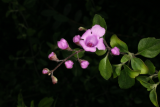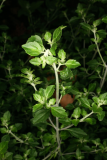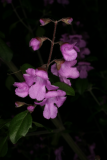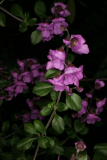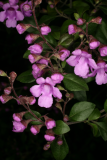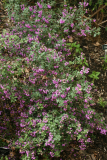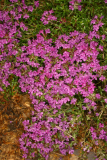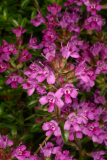Additional notes (click to expand)
Medicinal
Investigations of the antimicrobial potential of a number of other Prostanthera species have given interesting results. The essential oils of P. incisa and P. ovalifolia demonstrated a fairly broad range of antibacterial activity.
Williams, Cheryll (2010) Medicinal Plants in Australia, Vol.1, bush pharmacy. Rosenburg Publishing Pty Ltd. P.55
Nomenclature
Prostanthera ovalifolia R.Br. Lamiaceae Alpine anise bush, Oval leaf Mintbush, Purple mintbush.
Oakeley, Dr. Henry F. (2013). Wellcome Library notes.
link
Other use
Prostanthera ovalifolia R.Br. Lamiaceae Alpine anise bush, Oval leaf Mintbush, Purple mintbush. Woody shrub. Distribution: Australia. Minty flavoured leaves used in jams and jellies. Various essential oils are produced from commercially grown P. ovalifolia (cis-dihydroagarofuran, kessane, 1,8-cineole which is also known as eucalyptol, p-cymene,) and P. cuneata also contains eucalyptol. Concentrations of essential oils in the plants vary according to the clonal variety, growing conditions and time of year. Aboriginal peoples used Prostanthera leaves in medicinal ointments and washes, but one species, P. striatiflora, was used to poison waterholes to kill visiting emu (Hegarty, 2001).
Oakeley, Dr. Henry F. (2013). Wellcome Library notes.
link
Geographical distribution
- Australasia, Australia, New South Wales
- Australasia, Australia, Queensland
Prostanthera ovalifolia R. Br.
Family: LAMIACEAEGenus: Prostanthera
Species: ovalifolia R. Br.
Common names: Thousand Flowered Mint-Bush; Purple Mint-Bush
Distribution summary: E. Australia
Habit: Shrub
Garden status: Not currently grown
Reason for growing: Medicinal
